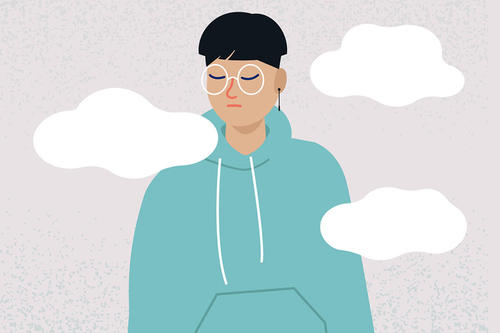PRISMH: A new initiative takes shape
A focus on mental health has been a theme through President Gabel’s presidency; even before she arrived at the University in the summer of 2019 she vowed that would be a priority.

The President’s Initiative for Student Mental Health (PRISMH), is a systemwide effort to bring together the services, programs, policies, and academic practices that showcase the University as a leader — not only in Minnesota, but in the nation.
PRISMH: The President’s Initiative for Student Mental Health
A focus on mental health has been a theme through President Gabel’s presidency; even before she arrived at the University in the summer of 2019 she vowed that would be a priority.
In February, Gabel announced the University’s first systemwide effort dedicated to addressing—in a holistic manner—the student mental health crisis. The President’s Initiative for Student Mental Health (PRISMH) will bring together mental health and wellness services, programs, policies, research, and academic practices from across the University’s five campuses, as well as the state of Minnesota.
“Student mental health is a top priority, and the COVID-19 pandemic has only increased the need for attention to this critical concern for our students’ well-being,” says Gabel.
“It’s extremely critical,” says Maggie Towle, senior associate vice president for student affairs and co-chair of the initiative. “I’d have to say the one consistent thing that those of us in student affairs hear from students is the concern about mental health and well-being. We are consistently hearing their concern about being able to stay in class and study when they’re under all of this stress. So I just think the timing of PRISMH is extremely important.”
“The long-term goal for PRISMH is to make the mental health resources across the University of Minnesota System more accessible, and make sure that we have mental health resources that meet the needs of students,” says Tabitha Grier-Reed, a professor in the College of Education and Human Development and the other co-chair of the initiative.
That means assessing programs and services, identifying gaps, and bringing the resources to the students, rather than having the students work to find them. Says Grier-Reed: “So maybe if we’re successful, in two or three years there’ll be the equivalent of ‘There’s an app for that.’”
In the meantime, the U of M will continue to offer a wide range of services to its students and staff, from clinical care and peer counseling programs to a host of successful recreation and wellness programming. (See “A wide array of mental health resources.”)
“We want to make sure that we’re at the cutting edge of providing those services or even discovering those services,” says Gabel. “And then we want to be a good partner to K-12 and other members of the community, so that we can help them with all the lessons that we’ve learned and be a part of an overall effort towards community well-being.”
- Categories:
- Health



